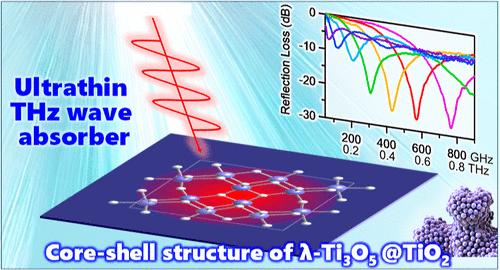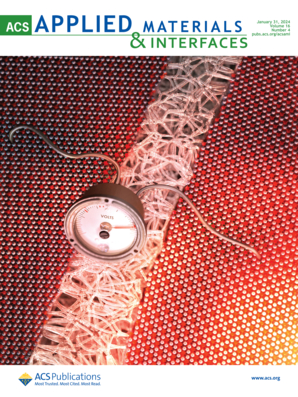Ultrathin Terahertz-Wave Absorber Based on Inorganic Materials for 6G Wireless Communications
IF 8.3
2区 材料科学
Q1 MATERIALS SCIENCE, MULTIDISCIPLINARY
引用次数: 0
Abstract
Terahertz waves are gathering attention as carrier waves for next-generation wireless communications such as sixth-generation wireless communication networks and autonomous driving systems. Electromagnetic-wave absorbers for the terahertz-wave region are necessary to ensure information security and avoid interference issues. Herein we report a high-performance terahertz-wave absorber composed of a composite of metallic λ-Ti3O5 and insulating TiO2 nanocrystals (λ-Ti3O5@TiO2). This material exhibits a strong terahertz-wave absorption with high values for the real (permittivity, ε′) and imaginary parts (dielectric loss, ε″) of the complex dielectric constant. Furthermore, the tan(δ) (≡ ε″/ε′) values are significantly high, ranging from 0.50 to 0.76 in the frequency range between 0.1 and 1 THz. An ultrathin film with a thickness of 48 μm recorded a reflection loss of –28 dB (99.8% of the terahertz wave is absorbed by the film). A terahertz-wave absorber with such a small thickness has yet to be developed. Not only does the present material exhibit resistance to heat, light, water, and organic solvents, but it can also be economically fabricated to support various applications, including outdoor uses.

求助全文
约1分钟内获得全文
求助全文
来源期刊

ACS Applied Materials & Interfaces
工程技术-材料科学:综合
CiteScore
16.00
自引率
6.30%
发文量
4978
审稿时长
1.8 months
期刊介绍:
ACS Applied Materials & Interfaces is a leading interdisciplinary journal that brings together chemists, engineers, physicists, and biologists to explore the development and utilization of newly-discovered materials and interfacial processes for specific applications. Our journal has experienced remarkable growth since its establishment in 2009, both in terms of the number of articles published and the impact of the research showcased. We are proud to foster a truly global community, with the majority of published articles originating from outside the United States, reflecting the rapid growth of applied research worldwide.
 求助内容:
求助内容: 应助结果提醒方式:
应助结果提醒方式:


